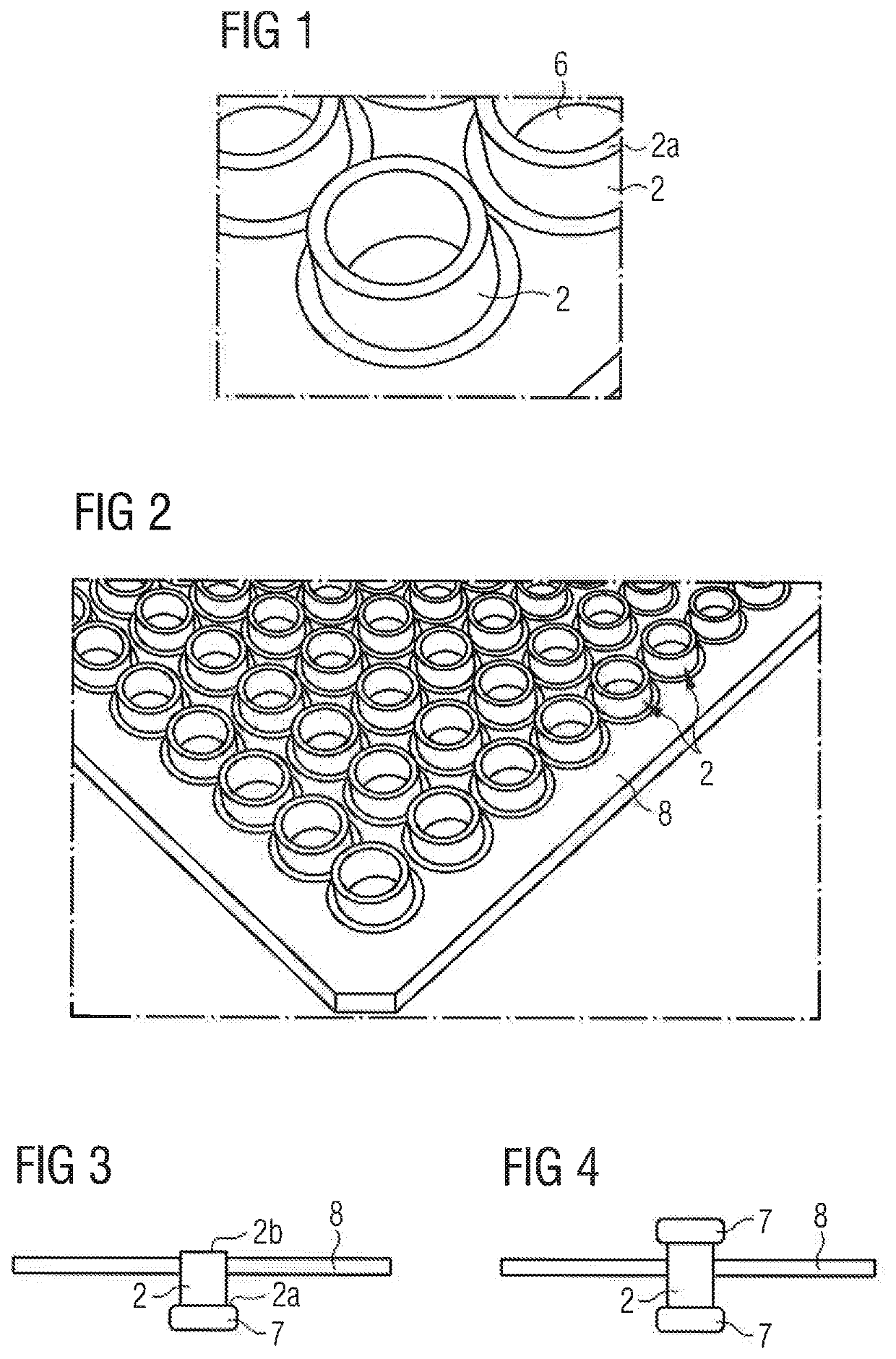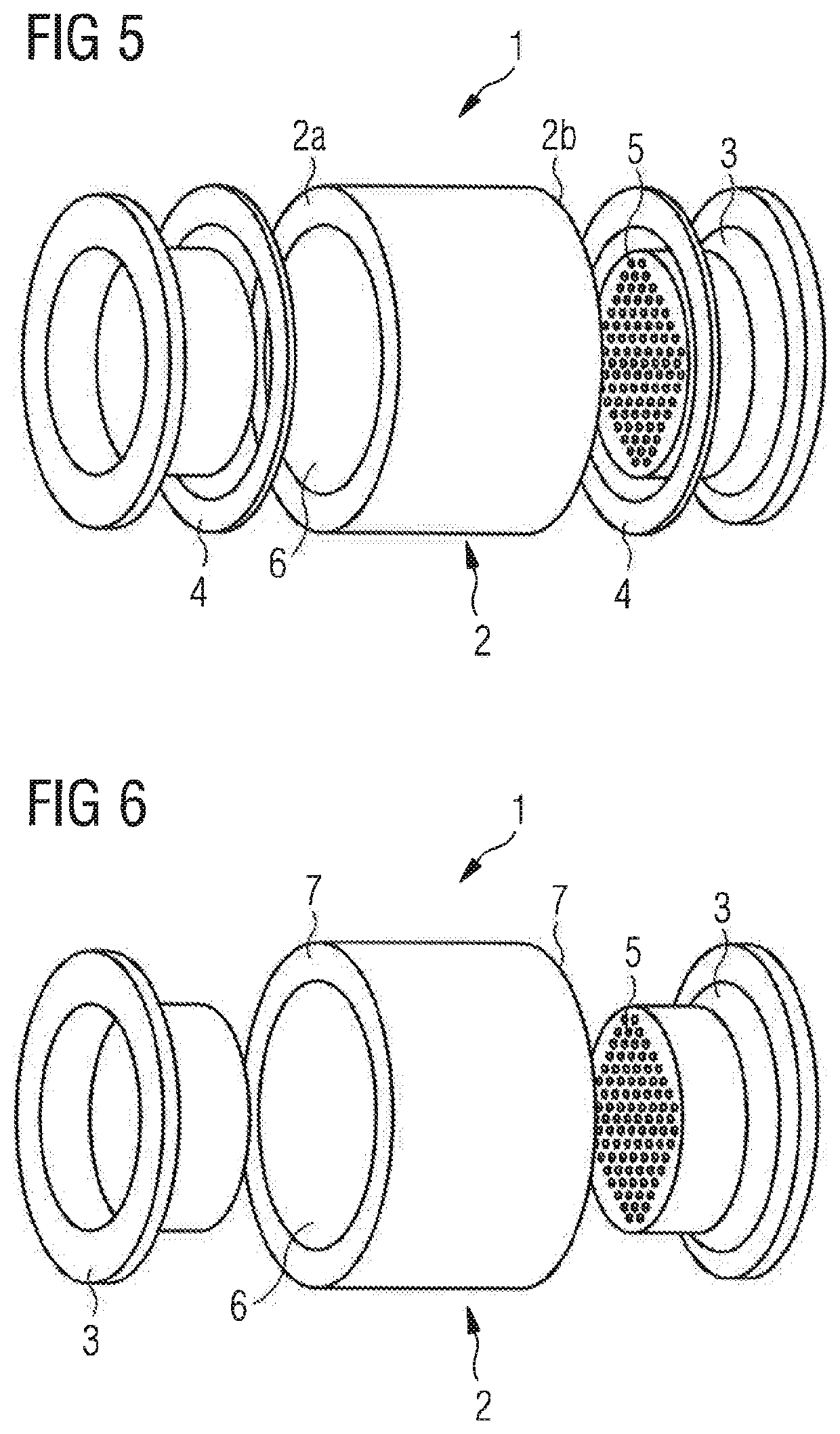Method for Producing a Gas-Tight Metal-Ceramic Join and Use of the Gas-Tight Metal-Ceramic Join
a metal-ceramic connection and gas-tight technology, applied in the direction of manufacturing tools, welding/cutting media/materials, welding apparatus, etc., can solve the problems of considerable cost saving, and achieve the effect of low cost and easy production and small thickness
- Summary
- Abstract
- Description
- Claims
- Application Information
AI Technical Summary
Benefits of technology
Problems solved by technology
Method used
Image
Examples
Embodiment Construction
[0028]Gas-tight metal-ceramic connections are used, for example, in surge arresters or switching spark gaps. A corresponding surge arrester 1 according to the prior art is shown in FIG. 5. Decisive in the production of such components is the gas-tight connection of the electrodes 3 to a ceramic main body 2. For this purpose, the main body 2 is metallized on the end faces 2a, 2b, and generally nickel-coated, which provides a brazable surface.
[0029]Until now, a brazing ring 4 has been used. This generally consists of a silver-copper eutectic (Ag72, CU28). The brazing ring is manually put in place during the production process, to flow later in the brazing furnace at temperatures of around 820° C. and to produce the desired gas-tight connection when it cools down. Previously used brazing rings 4 have a thickness of 60 μm to 100 μm.
[0030]In principle, a gas-tight connection could also be produced with less brazing material, but such thin brazing rings are not easy to handle. In particul...
PUM
| Property | Measurement | Unit |
|---|---|---|
| Temperature | aaaaa | aaaaa |
| Temperature | aaaaa | aaaaa |
| Thickness | aaaaa | aaaaa |
Abstract
Description
Claims
Application Information
 Login to View More
Login to View More - R&D
- Intellectual Property
- Life Sciences
- Materials
- Tech Scout
- Unparalleled Data Quality
- Higher Quality Content
- 60% Fewer Hallucinations
Browse by: Latest US Patents, China's latest patents, Technical Efficacy Thesaurus, Application Domain, Technology Topic, Popular Technical Reports.
© 2025 PatSnap. All rights reserved.Legal|Privacy policy|Modern Slavery Act Transparency Statement|Sitemap|About US| Contact US: help@patsnap.com


